Day: 40
Km travelled: 4.39km
Steps: 10 861
Location: Dublin
October 19, 2017
Don’t be afraid of the dark.— Good things come to those who wait. — Not for the faint of tongue.
 These are all popular slogans advertising the quintessential Irish beer: Guinness. Guinness is more than a beer in Ireland, it’s a culture, an institution, simply a part of the Irish way of life. Thus, no trip to Dublin could ever be considered complete without a stop at Ireland’s most visited site, the Guinness Storehouse. And yes, I wrote an entire post about beer. You’ve been warned.
These are all popular slogans advertising the quintessential Irish beer: Guinness. Guinness is more than a beer in Ireland, it’s a culture, an institution, simply a part of the Irish way of life. Thus, no trip to Dublin could ever be considered complete without a stop at Ireland’s most visited site, the Guinness Storehouse. And yes, I wrote an entire post about beer. You’ve been warned.
At €25, The Storehouse is an admittedly overpriced yet not to be missed attraction. Located at St James Gate Brewery, the self-guided tour covers seven floors surrounding glass atrium shaped in the form of a pint of Guinness.
The original building was constructed in 1902 as a fermentation plant for the brewery (where yeast is added to the brew). Attention grabbing and informative displays walk visitors through the entire brewing process, from raw ingredients to finished product. The seventh floor houses the Gravity Bar, where one can enjoy their perfect pint of Guinness (it’s guaranteed) with a view overlooking the city.
At the start of the tour, you’re introduced to the man who started it all, the legend that is Arthur Guinness.
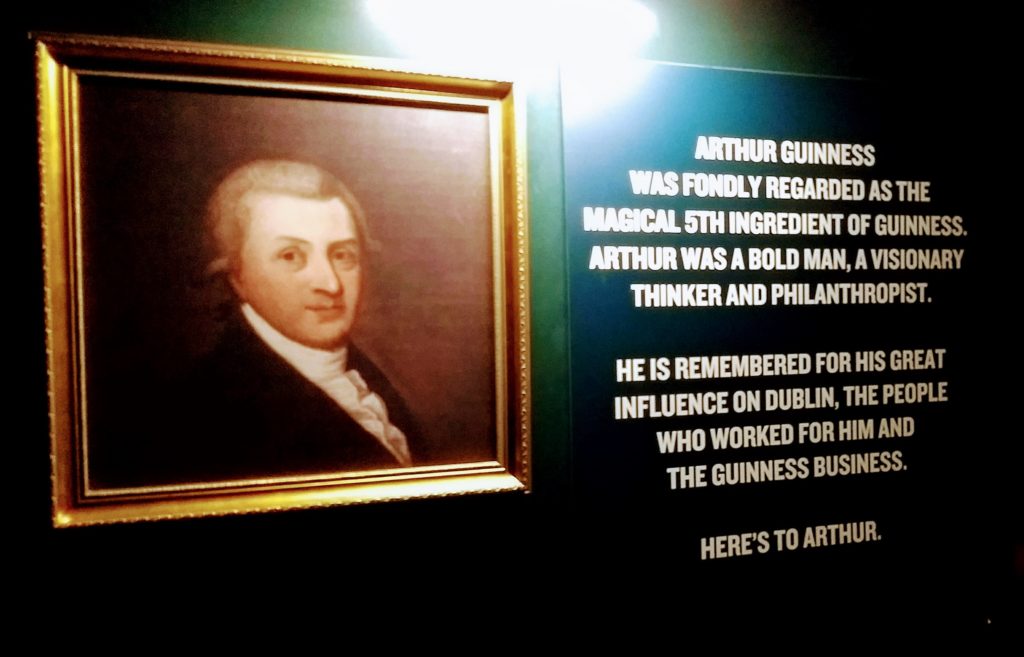
At 27, in 1752, Arthur was bequeathed h £100 in his godfather’s will and it is with that money that in 1755 he established a brewery outside Dublin. On 31 December 1759, he signed a 9,000 year lease at £45 per year o 4-acres at St James’ Gate in Dublin. The Guinness Brewery was born. It became the largest brewery in Ireland in 1838, and the largest in the world by 1886. Although no longer the largest brewery in the world, it is still the largest brewer of stout in the world.
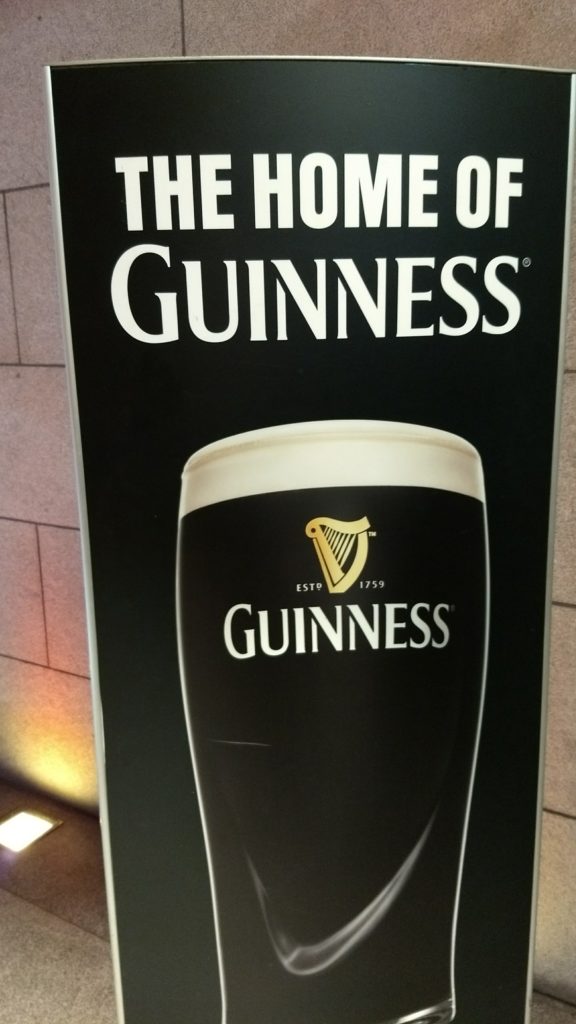

Most people recognize Guinness by its colour: black (technically ruby-red but it does appear almost black). There’s a popular legend that the beer gets it dark colour as its made with water from the River Liffey (Ottawa folks, you could compare the Liffey to the Rideau Canal). In reality, roasted barley is what gives it its characteristic dark colour and taste. Four other ingredients (water, roast malt extract, hops and brewer’s yeast) make up the basis of the stout beer.
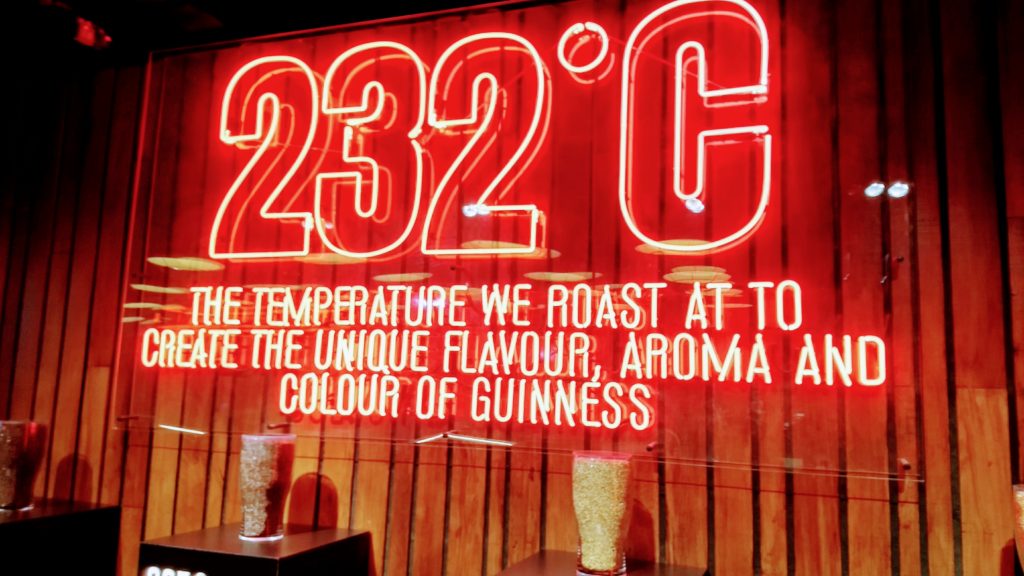
As the Guinness company themselves state : “That’s the temperature that makes Guinness taste like Guinness.”
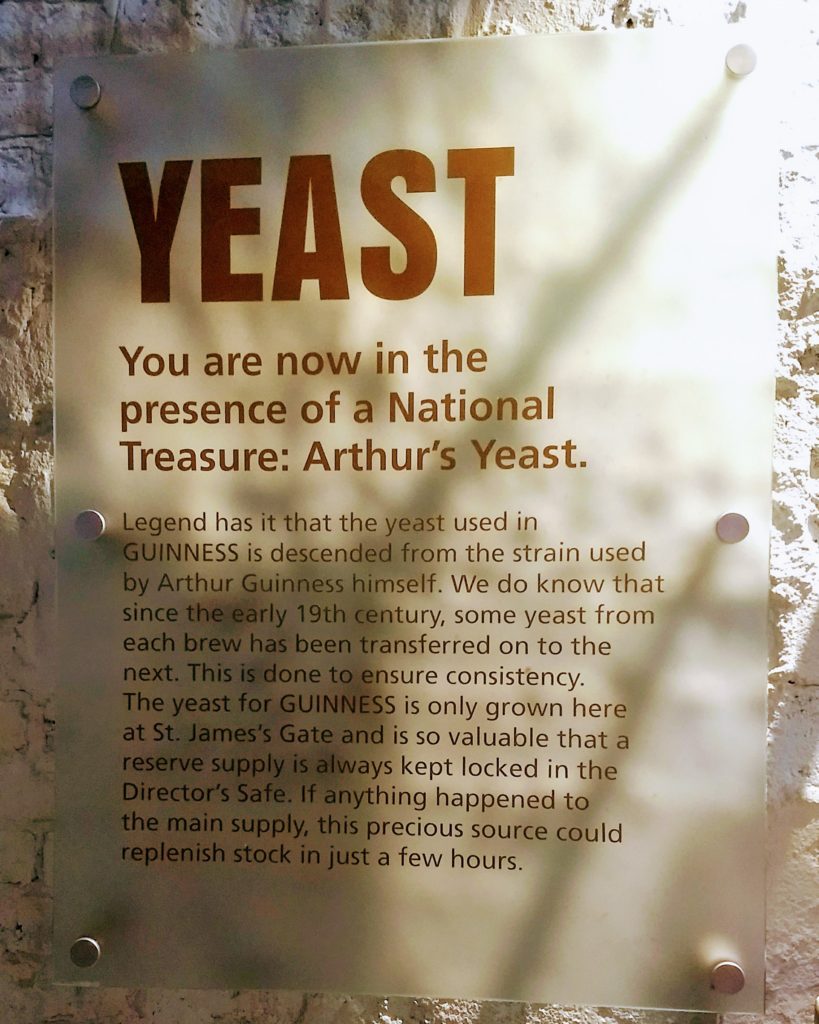
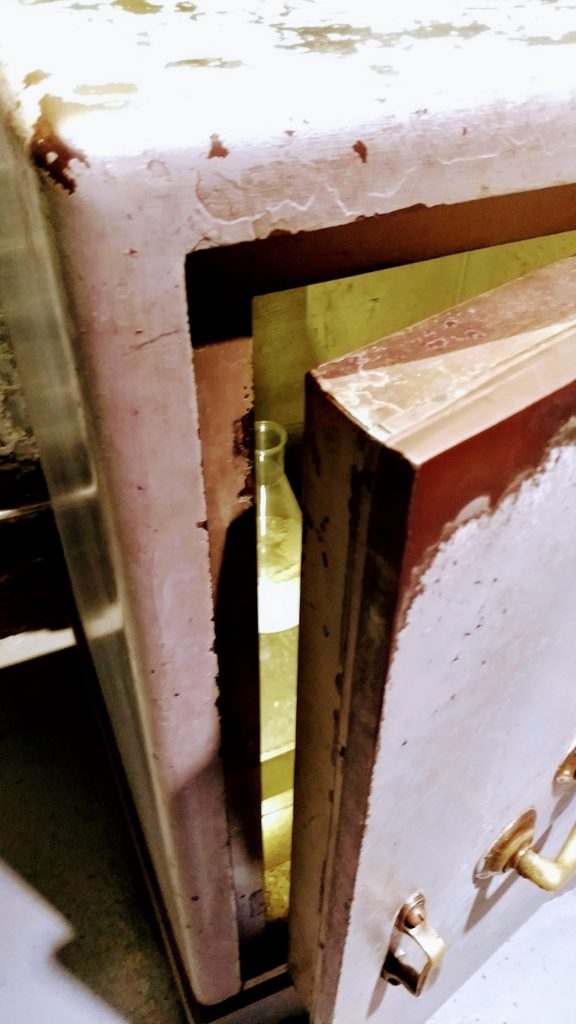
Another key ingredient? Arthur’s yeast. Although yeast was not included in the original recipe for the beer, the strain of yeast that is now included in every batch has been handed down from generation. It’s so precious to the company, that they keep a special reserve under lock and key in case the main batch should be compromised! This ensures that every batch of Guinness always tastes the same.

Guinness is now brewed all over the world and one way that the company ensures consistency is that batches of the brews are sent back to Dublin each month for testing. Now that’s commitment to quality!
The last important step is considered a technological breakthrough in the art of brewing. 1959 Guinness changed its whole composition by introducing nitrogen. 30 million bubbles are what give Guinness its signature thick, creamy head (believe it or not, there’s actually a ‘head height test’ to ensure the correct amount of bubbles is in every pint)
This is also the cause of the “surge & settle” effect due to nitrogen bubbles cascading don the side of the glass. Guinness has historically created marketing campaigns around this phenomena, hence the “Good things come to those who wait” slogan from earlier.
The second best part of the tour is the opportunity to learn how to pour the perfect pint (what’s the best thing you ask? Well, it’s what comes after pouring the perfect pint of course…!).
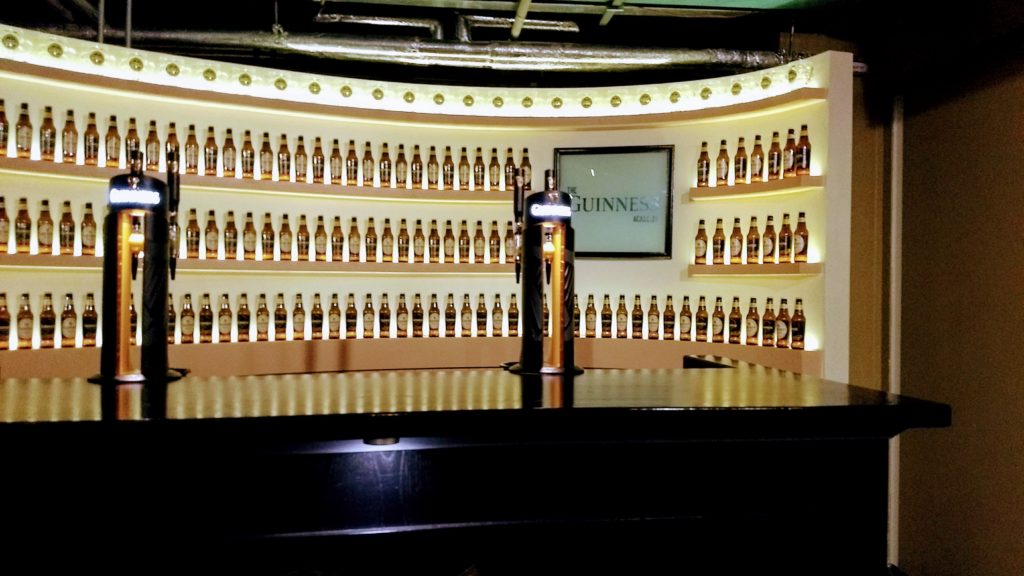
Now, I could tell you the secret to pouring the perfect pint, but then i’d have to, well, you know. Only those certified pourers like myself are privy to such information…


And voila: the perfect pint (right). the product of a double pour, which, according to the company, should take 119.5seconds.
The harp motif that has become the emblem of the beer is modelled on the Trinity College Harp (from the previous post) and faces right instead of left to differentiate it from the Irish coat of arms.
Although it has achieved international popularity, many would argue that it is an ‘acquired’ taste. I was definitely one of those. Having tried Guinness in the past, I had long decided that it just wasn’t for me. However, never one to shy away from sampling the local flavour, and wanting to fully get my money’s worth, I tried it. And then something unexpected happened. I liked it. No, wait. I loved it! Creamy and smooth, the bubbles tickling your taste buds… it was magical!

One of the reason for this is likely due to its freshness and its pour. This particular batch was brewed only 5 days prior. You literally cannot get a fresher pint anywhere else. Also, as previously mentioned, the pour technique is essential to the taste (and I was, by then, an expert).
And of course, the view out of the Gravity Bar didn’t hurt either.

The tour and following days in the city revealed some interesting facts about Guinness beer:
- a pint contains 198kcal, slightly fewer than skimmed milk, orange juice and most other non-light beers. (that makes it healthy, right?)
- studies claim that Guinness can be beneficial to the heart due to antioxidants which slow down the deposit of cholesterol. Red wine has competition! The slogan “Guinness is good for you” derives from that time.
- The Guinness Book of Records started as a Guinness marketing giveaway.

The other interesting thing I learned was not about the Guinness product, but about the Guinness family themselves. Specifically, their contribution to the city of Dublin.
Guinness employees enjoyed social benefits (ie. “welfare scheme”) long before it was popular. By the 1920s, there were pension schemes, free concerts and sports, education, subsidised meals medical and dental care… and two free pints of Guinness. Lodgings were even built at St James Gate to house employees.
The Guinness family over the years have also financially contributed to the development of the city: aided in the restoration of St Patrick’s Cathedral; set up a grant to fund the Lister Institute for Preventive Medicine in England; helped to advance the practice of testing of milk and elimination of TB-infected cattle; built facilities to house poorer city residents; paid for the restoration of Ireland’s first public library and even donated money to build a maternity hospital.
Another contribution of the family, was the gift of St Stephen’s Green in 1876. Previously built as the private ‘garden’ for families residing in nearby Georgian houses, Arthur Guinness (grandson of the original Arthur Guinness) bought the land and converted it into a public park for all Dubliners to enjoy.
It’s easy to see why Guinness, both in beverage and in name, has become such a cultural institution in Ireland.

